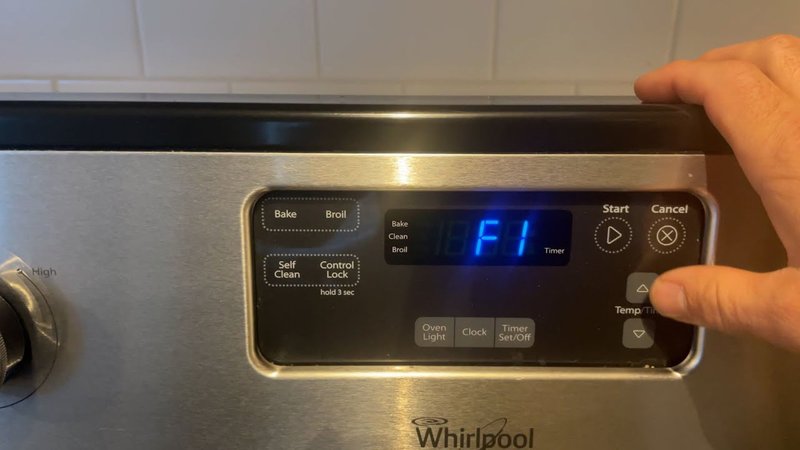
Now, you might be asking, “Does that mean it’s broken beyond repair?” Not necessarily! Often, such issues can be fixed with something as simple as resetting the dishwasher. Imagine it like rebooting a computer when it’s acting up. By resetting, you’re effectively giving the appliance a fresh start, clearing out temporary glitches that might be causing the problem. But how exactly does one go about this, and when is it time to call in the professionals? Let’s dive deeper.
Understanding the F1 Error Code
The F1 error code on a Whirlpool dishwasher is a bit like your car’s “check engine” light. It doesn’t point to a single issue but rather indicates a range of possible underlying problems. Typically, it means the machine is detecting excess water in the base or an issue with the sensor. This could be due to a faulty water inlet valve, which is somewhat like having a clogged faucet that can’t supply water as needed. Alternatively, it could be a malfunctioning float switch, which acts like a buoy in a pool, floating higher as water levels increase.
In some cases, the error might even stem from an issue with the dishwasher’s electronics. Electrical glitches can act like a mischievous ghost in the machine, causing unexpected signals or misinterpreting normal operations as faults. But don’t let these possibilities overwhelm you—many times, these situations can be resolved with a simple reset, akin to giving your dishwasher a gentle nudge to get back on track.
If you’re a beginner worried about tackling these issues, rest assured that understanding and addressing the F1 error isn’t as daunting as it sounds. The key is to approach it step by step, like solving a puzzle by fitting each piece one at a time. By the end of this guide, you’ll have a clearer picture of the F1 error and how a reset might just do the trick to fix it.
How to Reset Your Whirlpool Dishwasher
Resetting your Whirlpool dishwasher is a straightforward process that doesn’t require any special tools or technical know-how—just a bit of patience and a willingness to follow along. Start by locating the power button or unplugging the dishwasher from the wall socket. It’s equivalent to turning off your smartphone when it freezes—it’s all about shutting it down completely to erase any temporary errors.
Once you’ve turned off the power, wait for about 10 minutes. This downtime is crucial because it allows the dishwasher to fully discharge any residual energy, ensuring that the reset is effective. Think of it as letting your device cool off after a long day of work. After the wait, plug the dishwasher back in or turn the power back on and start a new cycle. With any luck, this reset should clear the F1 error and let you return to your daily routine without the frequent beeping and flashing lights.
If the error persists after a reset, it could be a sign of a more significant mechanical or electrical problem. Don’t stress! This is where seeking professional help or a detailed troubleshooting guide can be beneficial. Always remember, safety first—if you’re unsure or uncomfortable, it’s best to leave more complicated repairs to the experts.
Preventing Future Error Codes
Now that you’ve tackled the pesky F1 error, it’s worth considering measures to prevent future issues. Regular maintenance is key to keeping your dishwasher running smoothly—think of it like routine check-ups for your car. Ensure you clean the dishwasher’s filter regularly, as a clogged filter can impede water flow and contribute to errors like F1. Additionally, using the right dishwasher detergent and ensuring proper loading can go a long way in maintaining optimal performance.
Another helpful tip is to periodically inspect the water inlet valve and float switch. These components are pivotal in regulating water levels, and keeping them in good condition can help prevent potential malfunctions. If you notice any wear or damage, replacing these parts sooner rather than later can save you a lot of headaches down the road.
Finally, always be mindful of the dishwasher’s overall environment. Avoid overloading it, which could strain the motor and lead to electrical issues. By practicing these preventative measures, you’ll not only avert future F1 errors but also extend the lifespan of your trusty kitchen companion. So, the next time an error code flashes, you’ll know just what to do—a little troubleshooting, a pinch of patience, and you’re all set!